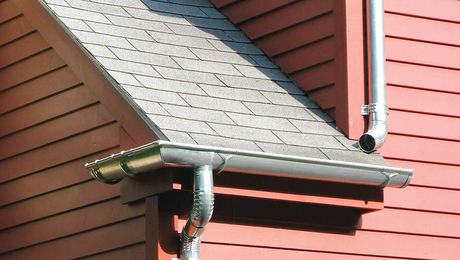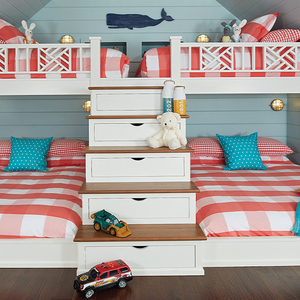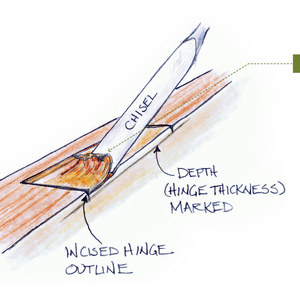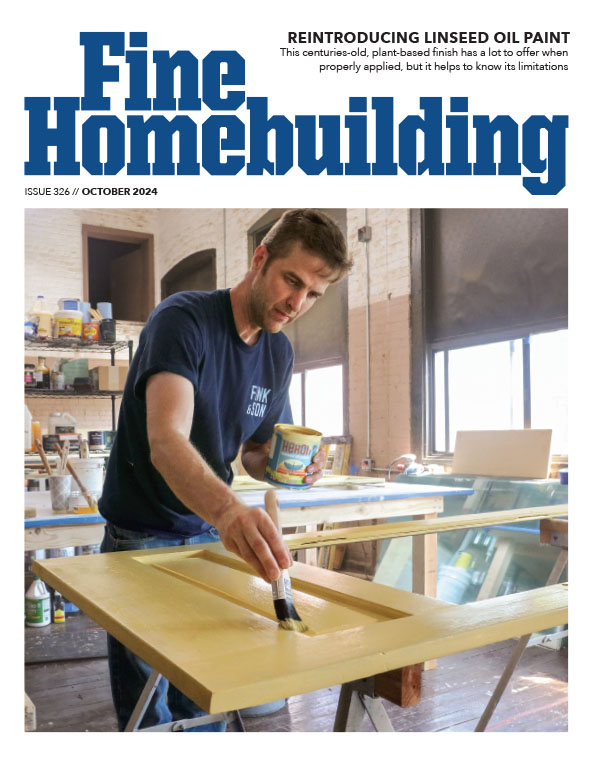In the past I’ve used plastic sheeting between ceiling material and bottom chords of roof trusses as my vapor barrier, but a recent HVAC subcontractor recommended housewrap saying “breathability” was desireable there. Anybody have input on this one way or another?
Discussion Forum
Discussion Forum
Highlights
"I have learned so much thanks to the searchable articles on the FHB website. I can confidently say that I expect to be a life-long subscriber." - M.K.
Fine Homebuilding Magazine
- Home Group
- Antique Trader
- Arts & Crafts Homes
- Bank Note Reporter
- Cabin Life
- Cuisine at Home
- Fine Gardening
- Fine Woodworking
- Green Building Advisor
- Garden Gate
- Horticulture
- Keep Craft Alive
- Log Home Living
- Military Trader/Vehicles
- Numismatic News
- Numismaster
- Old Cars Weekly
- Old House Journal
- Period Homes
- Popular Woodworking
- Script
- ShopNotes
- Sports Collectors Digest
- Threads
- Timber Home Living
- Traditional Building
- Woodsmith
- World Coin News
- Writer's Digest



















Replies
His recommendation doesn't make any sense to me. The whole point of a vapor barrier is to not have breathability. You don't want moisture from the interior diffusing through the insulation, because when it gets to the colder part of the insulation, the moisture will condense, saturating the insulation.
The purpose of housewrap is to allow moisture to diffuse out easily, while blocking air movement and shedding rain. If you used it in a ceiling, you would not be protecting the insulation from moisture at all.
I'm speaking in terms of a northern climate.
ya i'm confused also, and have asked in here previously for answers regarding housewraps vs other materials for vapor or moisture barriers. Is tyvek better than tar or felt paper for exterior applications? Is it superior for interior applications as original poster asks or is it just a superior way for du-pont to separate us from our money?
Though I'm an engineer, my field is not building science, so all I can offer is an educated opinion based on the reading I've done. Perhaps an expert in the field can post a more definitive answer.
I don't think housewrap is good for interior applications, nor is it marketed as such. As an example, consider a house in a northern climate. For most of the year the interior is warmer than the exterior. Normal activities within the home generate moisture, which humidifies the air. With a normal insulated wall, without any vapor barrier, moisture diffuses into the wall and through the insulation. The air gets colder and colder as it works its way toward the outer surface. At some point between inside and outside, the air gets cold enough so the moisture condenses. Then it wets the insulation, not only reducing it's insulating value, but leading to rot.
This movement of moisture into a wall happens primarily in two ways, diffusion of the vapor through the actual wall material (passing right through drywall), and by air leaking from the interior into the wall through cracks and openings. To keep moisture out of the walls the walls must be made impermeable to moisture and sealed tight. This is generally accomplished with a vapor barrier, either poly sheet over unfaced insulation or insulation with a vapor barrier (treated kraft paper or foil) attached.
On the exterior of the wall, you want to keep air from blowing in, but you don't want to trap moisture within the wall. It's impossible to seal the interior completely, so you want what (hopefully little) moisture enters from indoors to have a way to escape. That's why it's really bad to put plastic on the outside of a home. (We're still talking northern climates.)
Housewraps are ideal for the exterior. They resist the infiltration of liquid water, like wind-driven rain and leaks, they inhibit air infiltration, but let moisture diffuse out. They are better at the last two tasks than tar paper, and take less time to install. I can't cite test data to indicate how much better, because it's not my expertise. But, I'm sure such studies have been done.
If you put housewrap on the inside and poly on the outside, that would be the worst possible thing you could do, because you'd allow moisture in from the inside and trap it within the wall.
Sorry the post is so long. I hope I answered much of your question.
thank you so much wayne, that was an excellent explanation. not at all to long but rather just what i was looking for. i have a greater understanding of the housewrap situation and feel comfortable that it was not a sales pitch. i live in california and endeavor to keep the inside thouroughly sealed. i doubt that the housewrap makes much of a difference with our climate. in fact i know of designs being built with cathedral ceilings and no vent. anyway just wanted to respond and say thanks.
housewrap vs felt is a good way to get an arguement going ....the old he said/she said deal ....
I think felt is better ...
housewrap is more convient to install ......9ft rolls vs 3 ft ....
it's mostly an opinion thing .....and opinions vary.
JeffBuck Construction Pittsburgh,PA
Fine Carpentery.....While U Waite
First, before anyone can give you an answer to your question you have to tell us where you live. The proper application of vapor barrier is entirely geographic region dependant. For example, in the deep south east US, the vapor barrier is placed on the exterior sheathing side of the insulation... Therefore, you need to get current information specific to your area.
That said, in my area (NC) I have never seen a poly vapor barrier applied to a ceiling.
Further, I believe that the current thinking among building scientists is that poly vapor barrier is very possibly a major contributing factor to the current mold "epidemic" (which incidentally I think 80% of the time is based only in paranoia planted by lawyers).
During 2002 - 2003 I built 13 houses that were Energy Star certified by a company called Advanced Energy http://www.advancedenergy.org/ that administers the Energy Star program for the US Environmental Protection Agency. If you do not immediately recognize the term Energy Star, you have undoubtedly seen the Energy Star label on appliances and computer monitors. The Energy Star program for homes guarantees fuel bills to be less than that of comparable homes, and backs that guarantee with $$ refunds on energy bills to homeowners. The guys from Advanced Energy had us specifically *not* use poly for vapor barrier in either the walls or ceiling. When I asked why, I was told it was because of mold concerns.
You need to spend some time reading about residential thermal envelope vapor barriers in general. Try this site: http://www.buildingscience.com Also search the archives here at Breaktime.
Edited 9/20/2003 5:45:28 AM ET by DIRISHINME
Even in northern climates, many of the more experienced, conservative builders are going back to the old foil-faced kraft for the VB, instead of using poly sheeting, especially for reno's and remod's. The reason is to let the house breathe a bit so that those nasty molds and so on that are becoming the bane of new 'airtight' houses, won't get the right environment to propagate.
I believe what is called 'sick house syndrome' is one of those modern garbage terms invented by lawyers and special interest groupies, but I also believe that since we know we can't completely seal a wall unit (staple holes in the poly, bubbles in the glasclad tape, whatever), there's always some moisture that's going to get into the wall. If that's the case, I want it to be able to get out again, one way or the other.
There are certain areas inside a home where I will prefer to use poly instead of a foil VB: kitchens, baths, and laundry rooms. All these places are high humidity production centers, and most are vented mechanically to deal with that. (But the HO doesn't always turn on the fan every time he/she boils water for a pot of coffee....
Other than that, I prefer foil-faced kraft. It keeps most of the moisture from working it's way out of the house and into the wall, but allows some air exchange even so--enough, experience shows, to avoid lots of moisture induced problems that newer homes, even those fitted with code-required air-exchangers, show.
Dinosaur
'Y-a-tu de la justice dans ce maudit monde?
Thanks for the info and web sites, Matt. This bldg site is in the Ozark Mts. of northern Arkansas above 2000 feet elevation so it's not like the lower, more humid coastal plains region that's part of these southern states. Poly is what is commonly used around here in the ceilings (when at all). However, this house is fairly tight as it incorporates ICFs all the way up to the top plate which is (unfortunately) kinda new territory for me. We're putting in a ridge vent system so it should get good ventilation above the ceiling. The HVAC sub is putting in a requisite air exchanger system along with heat pump. I just want to do it right.... Thanks again.
Rick
Proper mechanical ventilation for the interior of the home goes a long way toward preventing moisture problems in the home. Sounds like you are addressing that with the fresh air exchanger. Make sure you get good sized exhaust fans for the baths and kitchen - maybe 100CFM bath and 200 CFM kitchen, and shop for some quiet ones. If they are loud, they will get used less frequently. Use hard pipe to vent them to the exterior of the house. That cheap plastic accordion stuff deteriorates over the years, and then you are pouring moisture into your attic. There is a heavy metal semi-flexible type that is acceptable too. It is much thicker than tin foil. Don't use that plastic stuff on dryers either. The bath fans could even be controlled by a humidistat. All of this is Energy Star stuff, except the humidistat idea.
Another thought is to make sure that you have an excellent vapor barrier on the "bottom" of the house. If it is a crawl space seal off the crawl dirt floor well with plastic. There is a product called Tu Tuff that is more durable than regular poly. If it is a basement, put 6 mill poly under the slab - and don't let 'em poke holes in it when they pour the concrete.Matt
Thanks again Matt. We've always put in "quiet" fans in bathrooms, but the HVAC sub says it won't be necessary with the air exchanger system in this house. There will still be an extra fan in the kitchen, but now you've got me thinking about doing more in the bathrooms, too. PVC was already in the plan for the kitchen duct and in place for the drier vent. The house has a basement concrete floor poured over the Tu Tuff that you mentioned. (By the way, that sub wanted to poke holes in the cover, but I said, "No holes!") The cover is over a couple of inches of sand on top of the fill. I looked for a good while at the web site you suggested as well as the Breaktime archives but still am confused about the original "ceiling quandry" material. Of course, there's a good chance I just didn't access the right places! Any further thoughts??
I am aware that no one answered your real question directly. I think the ceiling poly vapor barrier is unneeded, however I have never built a house in your climate, so, my opinion needs to be discounted. Another thing to think about is that, really, whatever is used on the ceiling is going to have a number of holes in it, and therefore it's effectives will be marginal anyway; ceiling lights, partition walls, trim carpenters who poke holes in the drywall looking for studs & joists, holes through the wall top plates for wiring & plumbing and etc. The approach I have taken on the energy star houses and even my own was to go up in the attic after drywall, but before insulation and look for light coming through, and start plugging holes using caulk, foam, etc.
I do think that you need an exhaust fan in each full bathroom (as well as the kitchen). These special use rooms create "point loads" of moisture and are most effectively dealt with locally and immediately.
Here is a link that may provide you with some additional info, although some of it is dated http://www.hhinst.com/archives.html. Also, if you E-mail me your E-mail address, (click on my "handle" at the top of this message) I'll send you some E-copies of some magazine articles that relate to vapor barriers. I can't really post them or E-mail them from here.
The way I make decisions on these type of building details, is to check a number of info sources, look for agreement among the different info sources, then filter it for my exact building situation, local climate, available expertise, and material availability, what has worked in the past for me, etc. Then I make up my own mind. Matt